Trawsfynydd is village situated just off the A470 road north of Bronaber and Dolgellau near Blaenau Ffestiniog, in the ancient county of Merionethshire. The area is one of the most sparsely populated in Wales, and is dominated by Llyn Trawsfynydd and its now defunct Nuclear power station. The men of Trawsfynydd who fell in both World Wars are commemorated on the village war memorial, which is situated some 200 yards from the play area at Cefn Gwyn housing state, at Parc Bryn-y-Gofed, Trawsfynydd. Among the names on the memorial is that of the famous Welsh Bard, Ellis Humphrey Evans, known by his Bardic name as Hedd Wyn. The memorial was unveiled on 10 September 1921.
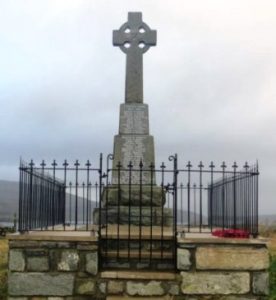
The Great War, 1914-1918
Robert Henry Davies, Driver, 82428, Royal Field Artillery. Robert was the son of Thomas and Margaret Davies, of Blaenau Ffestiniog. He worked as a horseman at Tyddyn Bach, Trawsfynydd by 1911, but then moved to South Wales to work at Pentre, Rhondda. Robert enlisted at Pentre into the Royal Field Artillery, and was posted to the 36th Battery, 33rd Brigade, Royal Field Artillery. He landed in France on 6 November 1914 and joined the battery in Flanders, where it was attached to the 2nd Division of the BEF. The Division had been in France since the outbreak of war, taking part in the Battle of Mons and the subsequent retreat to the Marne, before moving to Ypres to take part in the First Battle of Ypres. The Division wintered near Festubert, in terrible conditions, in sodden ground which necessitated the building of ‘islands’ above the ground, as the trenches were often too flooded to use. Robert was wounded here in March 1915, and died of his wounds on 15 March 1915, aged 40. He is buried in Éstaires Communal Cemetery and Extension, France.
William John Davies, Corporal, 7937, Machine Gun Corps. William was the son of Evan and Ellen Davies, of 4, Penygarreg Street, Trawsfynydd. He worked in Liverpool prior to the war and enlisted there into the Welsh Regiment. After completing his training, William specialised as a machine-gunner, so when he embarked for France, he joined the 73rd Company, Machine Gun Corps, which was formed in March 1916 attached to the 24th Division. The Division then fought throughout the Somme offensive, at Delville Wood and Guillemont, before moving north of Arras in early 1917. In April and May 1917, the Division fought at the Battle of Vimy, alongside the Canadian Corps, and in June moved to positions south of Ypres, and fought during the Battle of Messines. After the successful capture of Messines Ridge, the Division moved further north, and fought at the Battles of Pilckem and Langemarck. The Division then moved to positions north of St. Quentin over the winter of 1917/18, and was here when the Germans launched their Offensive on 21 March 1918, fighting a famous defence of the village of Le Verguier. The Division fought a brave rear-guard action at the Somme Crossings, and then at the Battle of Rosieres and the Battle of the Avre, before being moved to Flanders. Here the Division again came under attack, following the German offensive on the Lys, and saw heavy fighting at the First Battle of Kemmel. William was killed in action here on 11 April 1918, aged 26. He is buried in Aix-Noulette Communal Cemetery Extension, France.
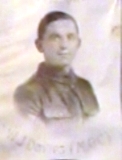
Joseph Edwards. Joseph cannot presently be identified.
Ellis Humphrey Evans, Private, 61117, Royal Welsh Fusiliers. Ellis was born at Penlan, Trawsfynydd on 13 January 1887, the son of Evan and Mary Evans. In 1887 the family moved to Yr Ysgwrn, Cwm Prysor. A renowned poet before the war, Ellis was also a pacifist, common amongst Welsh Chapel-goers, so refused to enlist. Once conscription was brought in, his father was faced with a tough choice of which son to allow to go to war, so Ellis volunteered, to save his younger brother Robert. By February 1917 Ellis had enlisted into the Royal Welsh Fusiliers and was posted to Litherland Camp, in Liverpool for training. By now he had started work on his poem ‘Yr Arwr’, but went home on leave, and left the unfinished manuscript there. In June 1917 Ellis embarked for France and was posted to the 15th Battalion, Royal Welsh Fusiliers. The battalion was attached to 113 Brigade, 38th (Welsh) Division, and was at Tatinghem training for a forthcoming offensive at Ypres. Ellis decided to re-write ‘Yr Arwr’, and posted it home at the end of June, for entry into the National Eisteddfod. By 12 June the 15th RWF had moved back into the front line, at the Canal Bank, to the north of Ypres, to begin a routine tour in the trenches. On 28 June the battalion moved back into reserve at Flechin, to undergo more training, and on 16 July began to march back towards the front, going back into the line on 23 July. The battalion suffered a number of casualties on 27 July, due to false reports that the Germans had withdrawn, and a patrol of the 15th RWF was sent out, encountering a strong German presence, before being forced to withdraw, under heavy fire. The main offensive, the Battle of Pilckem Ridge, was launched at dawn on 31 July 1917, as part of the overall Passchendaele offensive. The 38th (Welsh) Division was allocated to seize the Pilckem Ridge, up to the Steenbeek, and launched its attack on a wide front that morning. Ellis was mortally wounded early in the morning, near a position known as Iron Cross. He was reportedly carried to an aid post where he died at around 11.00 that day. The 30-year-old is buried in Artillery Wood Cemetery, Ypres. Sadly, on 6 September 1917, the ceremony of Chairing of the Bard took place at the National Eisteddfod at Birkenhead. Ellis had entered his poem ‘Yr Awyr’ under the pseudonym Fleur de Lys, and it was his poem that was declared the winner. It took a while for the judges to find out that the winner was actually Hedd Wyn, and that he had just been killed, so the empty chair was draped in a black sheet. This act gave rise to his nickname, The Black Bard.
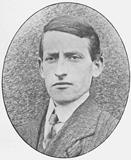
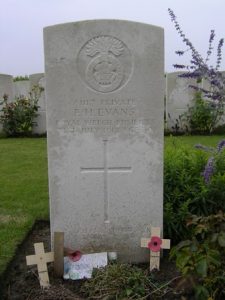
John Evans, Private, 47298, Hertfordshire Regiment. John was the son of Thomas and Mary Evans, of Maengwyn House, Trawsfynydd. He was living in Swansea when war erupted, and enlisted there into the Royal Army Medical Corps. John was then transferred into the infantry, so when he was drafted to France, he was transferred to the 1st Battalion, Hertfordshire Regiment, which was attached to 118 Brigade, 39th Division. The Division had moved to France at the end of February 1916, and on 30 June 1916 took part in a very costly attack in the area of Richebourg l’Avoue, suffering heavy casualties. The Division moved to the Somme in August 1916, where it fought at the Battle of the Ancre Heights, capturing the Schwaben Redoubt, and helped the Canadians capture the Regina Trench. The Division then fought at the Battle of the Ancre, and remained on the Somme over the winter. In 1917 the Division was at Ypres, and fought throughout the entire Passchendaele offensive. During the beginning of 1918 the Division was stationed near St. Quentin, and was one of the Divisions to be hit hard here by the German Offensive which was launched on 21 March 1918. John was killed in action during that day, when the front line was overwhelmed. The 31-year-old has no known grave and is commemorated on the Pozieres Memorial, France.
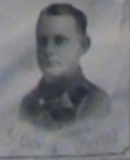
Owen Evans, Private, 26120, Royal Welsh Fusiliers. Owen was born in Blaenau Ffestiniog in 1894. By 1911 he was living at Gilfachwen, Trawsfynydd, where he worked as a farm labourer. Owen enlisted at Blaenau Ffestiniog into the 17th Battalion, Royal Welsh Fusiliers on 3 June 1915. The battalion had been raised at Llandudno from 2 February 1915, becoming part of 115 Brigade, 38th (Welsh) Division. The Division moved to Morn Hill Camp, Winchester during the summer of 1915 to complete its training, before embarking for France from 2 December 1915. Owen embarked with the 17th RWF from Southampton on 4 December, and the entire Division then moved to the Nursery Sector near Fleurbaix for trench initiation alongside the Guards Division. The Division then held a sector of the line near Cuinchy before marching south to the Somme sector in June 1916 to take part in the assault on Mametz Wood. The first attack on the wood was launched on a two-battalion front on 7 July, but failed, and the Divisional Commander, Sir Ivor Philipps, was replaced before the Division attacked again on a two Brigade front on 10 July 1916. Owen was badly wounded in the wood, suffering gunshot wounds to his head and right thigh. He was evacuated via the 45th Casualty Clearing Station to the 12th General Hospital, at Rouen, where his wounds made it necessary for doctors to amputate his right leg from the hip. Owen was eventually discharged as medically unfit on 21 March 1917, returning to Trawsfynydd. He died as a result of his wounds on 19 August 1918, aged 24, and was buried in Trawsfynydd Church Cemetery.
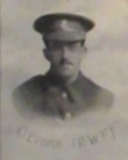
Thomas Evans, Private, 291530, Royal Welsh Fusiliers. Thomas was the son of Morris and Elizabeth Evans, of Bronygwern, 4, Station Road, Trawsfynydd. He worked as a Painter prior to enlisting at Blaenau Ffestiniog into the 7th Battalion, Royal Welsh Fusiliers on 21 February 1916. He was posted to Park Hall Camp, Oswestry for training, before embarking for Egypt at Devonport on 3 July 1916. On 19 July 1916 Thomas joined the 1/7th Battalion, Royal Welsh Fusiliers, which was on the Suez Canal Defences, attached to 158 Brigade, 53rd (Welsh) Division. The Division had been evacuated from Gallipoli in December 1915, moving to Egypt to join the EEF, and helped guard the Suez Canal before taking part in operations to drive the Turks out of the Sinai. The EEF then turned its attention onto driving the Turks out of Palestine, and on 26 March 1917 launched its first offensive against the coastal city of Gaza, which guarded the road to Jerusalem. Initial gains during the day were lost when the assaulting divisions lost touch with each other and communication broke down when a thick fog cloaked the battlefield. Thomas was killed in action during the fighting that day. The 20-year-old has no known grave and is commemorated on the Jerusalem Memorial, Israel.
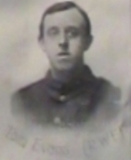
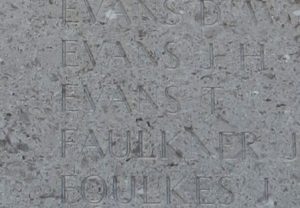
Thomas Richard Evans, DSO, Lieutenant-Colonel, North Staffordshire Regiment. Thomas was the son of Hugh and Mary Evans, of Llanwddyn. He was educated at Trawsfynydd School before gaining his BA in the University of London and afterwards worked for the Civil Service in London. Whilst in London he gained a reputation as a poet and playwright, and had won three Bardic Chairs prior to the war. Thomas married Hirall Catherine Douglas Young, in 1907, and the couple lived at 13, Victoria Road, Dagenham, Romford, Essex. He enlisted into the Royal Welsh Fusiliers soon after the outbreak of war and gained his commission into the Regiment, helping to raise recruits for the regiment in London. Thomas soon rose through the ranks and by April 1917 was promoted to Lieutenant-Colonel, taking command of the 1/6th Battalion, North Staffordshire Regiment in June 1918. The battalion was in the Essars sector, attached to 137 Brigade, 46th (North Midland) Division. On 8 August 1918 a brilliant Allied victory at Villers Bretonneux broke German spirits, then on 21 August a general advance was launched along the Western Front. The 46th Division, commanded by a Welshman, John Vaughan Campbell, VC, DSO, moved to Heilly, in the Somme valley, two weeks later, to take part in the great offensive, relieving the Australian Corps, and on 29 September 137 Brigade launched its famous attack on the Hindenburg Line, capturing the Riqueval Bridge across the St. Quentin Canal. The event is regarded as among the finest feats of arms of the entire war. The Division rested at Bellenglise before advancing again, and on the morning of 3 October 1918 Thomas led his battalion into an attack on the Fonsomme Line, near Levergies, with the assistance of tanks. The battalion successfully captured its objectives, together with some 2,000 prisoners, but Thomas was killed in action during the afternoon. He was 34 years old and is buried in Bellicourt British Cemetery, France. Thomas was posthumously awarded the Distinguished Service Order.
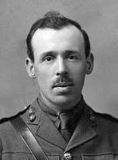
William Evans, Private, 432613, Canadian Infantry. William was born on 24 March 1893, the son of David and Jane Evans, of 5, Station Road, Trawsfynydd. He worked as a Slater and had emigrated to Canada prior to the war. William enlisted at Edmonton into the 49th Battalion, Canadian Infantry on 11 January 1915. The Battalion embarked for Britain on 3 June 1915. It disembarked in France on 9 October 1915, as part of the 7th Infantry Brigade, 3rd Canadian Division, and moved to positions in the Ypres Salient. After several months in the line, at the end of May 1916 the Canadian Corps drew up plans for an attack around the positions of Hill 61 and Mount Sorrel, and began to prepare for an offensive. Unbeknown to them, the Germans had similar plans, and on the morning of 2 June 1916 the German artillery began bombarding the Canadian lines. At 13.00 the Germans detonated four underground mines, then their infantry attacked. The Germans broke the line, and the road to Ypres lay wide open, but they failed to seize the initiative and began consolidating their gains, giving the Canadians time to recover. The 49th Battalion was in F Camp on 1 June, and the following day received orders to march to Belgian Chateau, and then to the Ypres Ramparts. The battalion then moved to Sanctuary Wood, as part of a counter-attack force. At around 01.30 on 3 June this counter-attack force hit the Germans, and began to regains some of the lost ground. Heavy fighting raged for several days, and by 14 June the battle ended, with huge casualties on both sides. William was posted as missing at some time between 2-6 June 1916, and was later adjudged by a Court of Enquiry to have been killed in action on 5 June 1916, aged 23. He has no known grave and is commemorated on the Ypres (Menin Gate) Memorial, Belgium.
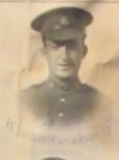
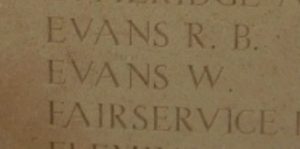
Albert Frederick Garrud, Corporal, 286021, Royal Garrison Artillery. Albert was born at Lewisham on 19 October 1888, the son of George and Annette Garrud. He was a regular soldier, serving with H Battery, Royal Garrison Artillery prior to the war, having enlisted at London on 17 February 1903, aged 14 years and four months. Albert served in Britain with the battery up until the outbreak of war, and embarked for France with the BEF on 21 August 1914. He would have taken part in the Battle of Mons and the subsequent retreat to the Marne, then would have moved with the BEF to Flanders. On 14 February 1916 he returned to Britain, and was discharged at Gosport, after completing 13 years’ service. He married Kitty Morris, of Highgate Hotel, Trawsfynydd, on 7 April 1917. On 7 July 1917 he was called back up for service, and was posted back to France, joining the 32nd Siege Battery, Royal Garrison Artillery. Albert was killed in action on the opening day of the German Spring Offensive on the Lys on 9 April 1918, aged 28. He was originally buried on the battlefield, but his grave was later exhumed and re-buried in Royal Irish Rifles Graveyard, Laventie, France.
Hugh Thomas Hughes, Private, 69871, Royal Welsh Fusiliers. Hugh was the son of John and Margaret Hughes, of Railway Shop, Trawsfynydd. He married Mary Jane Roberts in 1906, and the couple resided in Isfryn, Trawsfynydd, where their four children were born. Hugh enlisted at Wrexham into the Royal Welsh Fusiliers, and after completing his training was posted to France, joining the 16th Battalion, Royal Welsh Fusiliers, which was attached to 113 Brigade, 38th (Welsh) Division. Hugh probably joined the battalion in the Spring of 1918, following its move south to the Somme with the Division at the end of March, when it relieved the battered 2nd and 47th Divisions north of Albert. Following the successful combined Australian and Canadian assault at Villers Bretonneux on 8 August 1918, the Germans began to lose the will to fight, and on 21 August the Allies launched a massive offensive. The 38th Division crossed the flooded Ancre Valley and began their advance, seizing Thiepval Ridge before advancing across the old Somme battlefields of 1916 towards the Hindenburg Line. Hugh was seriously wounded during the first days of the offensive, and evacuated to the 53rd Casualty Clearing Station at Daours, where he died of his wounds on 3 September 1918, aged 31. He is buried in Daours Communal Cemetery Extension, France.
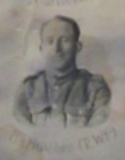
Robert Hughes, Private, PS/2168, Middlesex Regiment. Robert was the son of Robert and Gwen Hughes, of Trawsfynydd. He was a Draper in London prior to the war. Robert had enlisted into the 16th Battalion, Middlesex Regiment on 12 May 1915, and came home on leave to marry Margaret Susan Price, of Llanfihangel, Breconshire at Hampstead on 4 December 1915, just after having been transferred to the 24th Battalion, Middlesex Regiment, a reserve battalion stationed in Northampton. He was promoted to Corporal soon afterwards, but then became ill, and died of tuberculosis at the Military Hospital, Aylesbury on 3 January 1916, aged 26. He was buried with full military honours in Aylesbury Cemetery.
Griffith Price Jarrett, Private, 4075, Royal Welsh Fusiliers. Griffith was the son of John David Jarrett and Anne Jarrett, of Werngron, Trawsfynydd. He enlisted at Ffestiniog into the Royal Welsh Fusiliers, but was most likely found to be not fit for overseas service, as he was transferred to the 530th Agricultural Company, Labour Corps. Nothing more is known of his military service, but he would have worked on farms in Britain. Griffith died at Werngron on 6 November 1918, aged 24. He is buried in Trawsfynydd Church Cemetery.
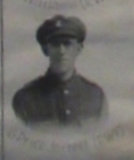
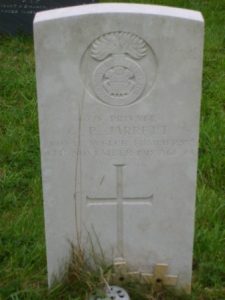
Ellis John Jones, Lance Corporal, 130582, Royal Welsh Fusiliers. Ellis was the son of Hugh and Jane Jones, of Brynhyfryd, Trawsfynydd. He enlisted at Ffestiniog into the Royal Welsh Fusiliers, and after completing his training was transferred to P Special Company, Royal Engineers. The Special Companies were formed to handle gas shells fired from 4-inch Stokes mortars. Each Company had 48 such weapons, and such barrages were usually launched to precede an infantry assault. Ellis was with his unit at Ypres, during the Passchendaele offensive, when he was killed in action on 27 August 1917, aged 30. He is buried in Vlamertinghe New Military Cemetery, Belgium.
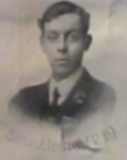
John Jones, Private, 315087, Royal Welsh Fusiliers. John was the son of Hugh and Laura Jones, of 2 Brynglas, Trawsfynydd. He worked as a Doctors Servant prior to enlisting into the Royal Welsh Fusiliers at Ffestiniog on 24 February 1916, and was placed on the Army Reserve. He was mobilised on 7 December 1916 and posted to Wrexham, then posted to the 3rd Battalion, Royal Welsh Fusiliers, at Litherland, for training. On 4 September 1917 John embarked for France, and joined the Infantry Base Depot at Étaples, before being posted to the 9th Battalion, Royal Welsh Fusiliers. The battalion was attached to 58 Brigade, 19th (Western) Division, and was in the Ypres Salient, where it had seen heavy fighting during the preceding weeks. He would have seen his first action during the Battle of the Menin Road Ridge. Soon after this, John’s mental health broke down, and he was hospitalised in France. On 18 September 1917 he was sent back to Britain, recommended for Asylum treatment, and was taken in as a patient at the Welsh Metropolitan War Hospital, Whitchurch, Cardiff. His parents were, by now, living at 93, Caerphilly Road, Senghenydd, and John was discharged from hospital into the care of his parents. He died at Senghenydd on 8 September 1919, aged 22, and his remains were conveyed home for burial in Penycefn Cemetery, Trawsfynydd.
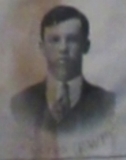
John Morris Jones, Private, 242160, Lancashire Fusiliers. John was born in Ffestiniog in about 1872, and was the nephew of John Morris, of Brynawen, Trawsfynydd. He lived at the Victoria Hotel, Llanbedr prior to the war. John enlisted at Liverpool into the Lancashire Fusiliers, and was posted to France, joining the 2/6th Battalion, Lancashire Fusiliers, which was attached to 197 Brigade, 66th (East Lancs) Division. The Division concentrated on the Western Front by 16 March 1917 and moved to the Flanders Coast. At the end of September 1917, it moved to Ypres, and took part in the Battle of Poelcapelle. The Division then moved south to the Somme, taking over positions at Templeux-le-Guerard, and on 21 March 1918 was hit here by the German Spring Offensive. The 6th Lancashire Fusiliers was ordered to counter-attack at 11.00, and managed to clear the Germans from Templeux-le-Guerard, but was then forced to withdraw to the sunken road behind the village after suffering heavy casualties. John was killed in action during the terrible fighting that day. The 46-year-old has no known grave, and is commemorated on the Pozieres Memorial, France. (The memorial states John Morris).
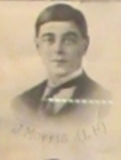
Watkin John Jones, Lance Corporal, 6734, Welsh Regiment. Watkin was the son of John and Catherine Jones, of Ardudwy Terrace, Trawsfynydd. He had enlisted into the Welch Regiment at Cardiff on 11 February 1901, and served for several years in South Africa prior to leaving the army. He then moved to Carnarvon where he worked as a Postman, and married Elizabeth Oakshott Jones there in 1911. Soon afterwards, the couple moved to the South Wales valleys, where Watkin gained work as a collier. As an Army Reservist, Watkin was recalled to the Colours and travelled back to Cardiff to re-enlist into the Welsh Regiment soon after the outbreak of war. He was posted to France on 10 November 1914, joining the 2nd Battalion, Welsh Regiment, which was at Ypres, attached to 3 Brigade, 1st Division. He joined up with the battalion near Zillebeke, where it was having a particularly nasty time, with the First Battle of Ypres still raging. By 23 November the 2nd Welsh had moved with the Division to the Kemmel sector, before moving into billets at Outtersteene to rest. Just before Christmas the Division took over trenches near Festubert, taking part in the famous Christmas Truce, before wintering in the sector. The Divisions next major action was during the Battle of Aubers Ridge on 9 May 1915, where the British suffered heavy casualties for no gain. The Division then moved to the Cambrin sector, where it remained in over the coming weeks, carrying out the routine of rotation in the trenches. On 5 June 1915 the 2nd Welsh was in the front line, when it came under attack by German grenade throwers. Watkin was one of two men killed during the attack. He was 33 years old, and was buried by his comrades in Cambrin Churchyard Extension, France.
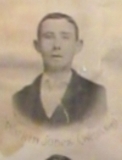
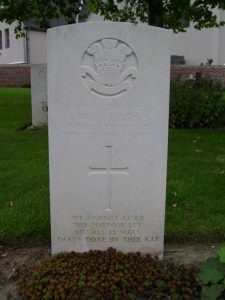
William Llewelyn Jones, Private, 55685, Royal Welsh Fusiliers. William was born in Trawsfynydd in 1893, the son of Llewelyn and Catherine Jones. He married Blodwen Davies in 1916 whilst working in the Trawsfynydd army camp. He was conscripted at Blaenau Ffestiniog into the Royal Welsh Fusiliers and was posted to the 15th RWF, which was attached to the 38th (Welsh) Division. William was among a large number of casualties suffered by his battalion at Pilckem Ridge when he was killed in action at sometime between 31 July and 4 August 1917, aged 23. Probably due to a mix up in names, William has never been commemorated by the CWGC, as several men of his name, one with the same name and a similar number, were killed during the battle. Following evidence submitted by myself, William has been accepted for commemoration by the CWGC on 25 March 2016 and his name will be added to the Ypres (Menin Gate) Memorial. He is possibly buried in Caesar’s Nose Cemetery?
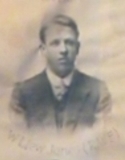
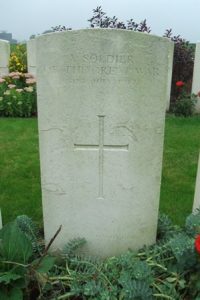
Moses Lewis, Private, 89972, Machine Gun Corps. Moses was the son of Hugh and Gaynor Lewis, of Bronwydd, Trawsfynydd. He lived at 13, Morgan Terrace, Porth prior to the war. Moses enlisted at Porth into the Welsh Regiment, but after being posted to France, was transferred to the 195th Company, Machine Gun Corps. The Company joined the 25th Division on 30 October 1916, on the Somme. The Division fought throughout the Somme offensive, and then moved to Ploegsteert, where it held the line for the months leading up the Battle of Messines in June 1917. After fighting at Messines, the Division moved north, and fought during the Battle of Pilckem Ridge, the opening offensive of the Third Battle of Ypres. Moses was badly wounded several weeks into the offensive and was evacuated to the Casualty Clearing Station at Remy Sidings, where he died of his wounds on 7 September 1917, aged 32. He is buried in Lijssenthoek Military Cemetery, Belgium.
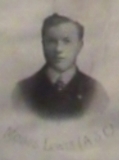
Humphrey Morris Lloyd, Private, 69272, Royal Welsh Fusiliers. Humphrey was the son of Edward and Elizabeth Lloyd, of Penybont, Trawsfynydd. He was a farm worker at Abergeirw Bach, Llanfachreth prior to the war. Humphrey enlisted at Ffestiniog into the Royal Welsh Fusiliers, and after completing his training was posted to France, joining the 17th Battalion, Royal Welsh Fusiliers. The battalion was attached to 115 Brigade, 38th (Welsh) Division, and Humphrey probably joined it in the winter of 1917, after the Division had been withdrawn from Ypres to the Erquinghem area to rest. The Division took over the defences in front of Armentieres over the winter. After the Germans launched their offensive on the Somme on 21 March 1918, the Division was moved back to the Somme, and took up positions north of Albert, around Aveluy Wood, relieving the battered 2nd and 47th Divisions. The Divisions launched a series of small offensives over the coming weeks, to gain control of the west bank of the River Ancre, and on 21 August launched an offensive across the flooded Ancre valley, as part of a general Allied offensive along the Western Front. Over the coming days the Division advanced across the old Somme battlefields of 1916. Humphrey was badly wounded when the Division assaulted and cleared Delville Wood on 29 August, and died of his wounds soon afterwards, on 31 August 1918, aged 23. He is buried in Delville Wood Cemetery, Longueval, France.
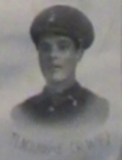
Griffith Llewelyn Morris, Private, 26450, Royal Welsh Fusiliers. Griffith was the son of William and Margaret Morris, of Trawsfynydd. He worked as a coal miner at Aberfan prior to the war. Griffith enlisted into the 10th (Rhondda) Battalion, Welsh Regiment at Merthyr on 6 October 1914. The battalion was raised in the Rhondda Valley by D. Watts Morgan, MP in September 1914, initially moving to Codford St. Mary to join 76 Brigade, 25th Division. On 30 September it was transferred to 129 Brigade, 43rd (Welsh) Division at Rhyl. The formation became renumbered to 114 Brigade, 38th (Welsh) Division in April and in August 1915 the Division moved to Winchester to complete its training. Griffith then transferred to the 17th Battalion, Royal Welsh Fusiliers, which was attached to 115 Brigade, 38th (Welsh) Division, and embarked for France with the battalion on 4 December 1915. The Division moved to the Nursery Sector near Fleurbaix for trench initiation alongside the Guards Division, in terrible conditions, in some of the most sodden ground of the entire front. On 5 January 1916 Griffith was admitted to the 9th Field Ambulance, suffering from influenza. He re-joined his battalion in the line at Reiz Bailleul on 15 January. On 19 February the division moved to a different sector, at Festubert, and began the usual system of trench rotation. On 3 March 1916 the 17th RWF was in the line at Le Touret, when Griffith and Second Lieutenant Allen were killed by snipers. Griffith was 22 years old and is buried in Le Touret Military Cemetery, Richebourg L’Avoue, France. He is also commemorated on the Aberfan War Memorial.
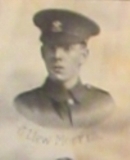
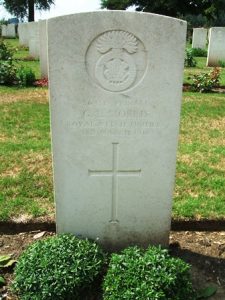
John Morris, Private, 242160, Lancashire Fusiliers. (See Jones, John Morris – Above)
Robert Morris, Private, 14943, South Lancashire Regiment. Robert was born in Trawsfynydd in 1882, the son of Evan and Ellen Morris. He enlisted into the Welsh Regiment at Cardiff on 11 February 1901, but by 1911 had left the army and was living at Senghenydd, where he worked as an engine driver. At some time afterwards his parents moved to 1, Barrington Street, Aberfan. By the time war erupted Robert was living at Astley, Lancashire, and working as a collier. He enlisted at Atherton into the South Lancashire Regiment on 2 September 1914 and was posted to the Barracks at Chester to join the Depot. Robert was then posted to the 8th Battalion, South Lancashire Regiment, which was at Codford attached to 75 Brigade, 25th Division. Robert embarked for France with the Battalion on 28 September 1915, and the entire Division moved to the Vimy Sector. The Division saw its first major action when the Germans attacked Vimy Ridge in May 1916. The Division then moved south to the Warloy area and from 3 July moved from positions in Aveluy Wood to take part in the Somme offensive. The 8th South Lancs moved into the Tara-Usna line, near Ovillers, on 7 July and on the following day moved into the front line, to begin consolidating and preparing to take up the offensive. On 13 July the battalion took part in an assault on Ovillers, and heavy fighting raged throughout the day. The men consolidated their gains during the night, while preparing to advance again. Robert was killed in action in Ovillers on 15 July 1916, aged 34. He has no known grave and is commemorated on the Thiepval Memorial, France. He is also commemorated on the Aberfan memorial.
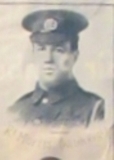
Thomas Morris, Private, 25278, Royal Welsh Fusiliers. Thomas was the son of David and Margaret Morris, of Llys Awel, Trawsfynydd. He worked as a Joiner prior to the war. Thomas enlisted at Ffestiniog into the 17th Battalion, Royal Welsh Fusiliers on 22 April 1915. The battalion had been raised at Llandudno before moving to Winchester in the summer of 1915, as part of 115 Brigade, 38th (Welsh) Division. The Division moved to France on 2 December 1915 and moved to the Nursery Sector near Fleurbaix for trench initiation alongside the Guards Division. The 17th RWF marched from Robecq on 26 December to go into the trenches alongside the 3rd Guards Brigade at Laventie for their first tour. By February the Division was in the line at Croix Barbee, with its battalions taking turns rotating in the front line or reserve. Towards the end of the month the Division moved to billets at Festubert and Le Touret, taking over a section of the line here. By the end of March, the Division moved again, taking over a sector at Gorre and a week later took over the Givenchy Village Line. On 12 May 1916 the 17th RWF was in the line at the Moated Grange when Thomas was killed. He was 21 years old and is buried in Rue-Du-Bacquerot No. 1 Military Cemetery, Laventie, France.
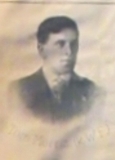
Robert Richard Owen, Private, 285370, Welsh Regiment. Robert was the son of Evan and Eleanor Owen, of 5, Ty Gwyn, Trawsfynydd. He enlisted at Newport, Shropshire into the Herefordshire Regiment, but was then transferred to the Monmouthshire Regiment. He was again transferred to the 6th Battalion, Welsh Regiment, but upon arriving in France was posted to the 15th Battalion, Welsh Regiment, which was known as the Carmarthen Pals battalion, attached to 114 Brigade, 38th (Welsh) Division. The Division had been in France since 2 December 1915, and in July 1916 had taken part in its famous assault on Mametz Wood. The battered Division had then moved via Hébuterne to Boesinghe, on the Yser Canal, where it remained until launching its attack on Pilckem Ridge on 31 July 1917. The Division attained its objectives that day, capturing Iron Cross and reaching the Steenbeek before being relieved. The 15th Welsh and the 16th Welsh remained in the line, and also took part in the Battle of Langemarck, before the entire Division was moved to positions on the Lys, near Armentieres over the winter. Robert was wounded soon after this move, and died of his wounds in Hospital at Étaples on 29 October 1917, aged 30. He is buried in Étaples Military Cemetery, France.
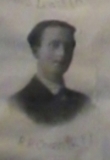
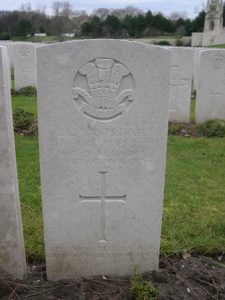
Evan Richards Parry, Private, 41601, South Wales Borderers. Evan was born in Trawsfynydd in 1899, the son of Evan and Emma Catherine Parry. By 1911 the family was living at 160, Commercial Street, Senghenydd, where Evan’s father had gained work as a coalminer. Evan enlisted at Caerphilly into the Training Reserve, and after completing his training was posted to France, where he joined the 5th Battalion, South Wales Borderers. The battalion was the Pioneer Battalion to the 19th (Western) Division, and had taken part in most of the major battles since landing in France on 16 July 1915. Following the closure of the Passchendaele offensive, the Division moved south to the Ribecourt Sector, in the Flesquières Salient. On 21 March 1918 the Germans launched the first stage of their Spring offensive, on a front ranging from Arras to La Fere, and the Allies were pushed back over the coming days, suffering terrible casualties. The 19th Division was then moved north to the Messines sector to rebuild, and this is probably where Evan joined up with the 5th SWB. The Division found itself caught up in the second phase of the German offensive, along the Lys Valley, from 9 April, and again saw heavy fighting before being moved to the quieter Aisne sector to rebuild, but on 10 May the Germans launched the third phase of the offensive on the Aisne, and the 19th Division again became caught up in desperate fighting. Once the German offensive had been brought to a standstill, the Division was moved back to the British sector, and from 21 August 1918 took part in the general offensive which won the war. Evan was wounded during the early stages of the offensive, and was evacuated back to England for treatment at Reading War Hospital. He died of his wounds there on 5 October 1918, aged 19. Evan was buried in Penyrheol Cemetery, Caerphilly. (The Trawsfynydd memorial names W R Parry)
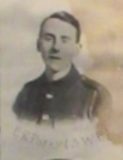
Azariah Phillips, Lieutenant, Royal Flying Corps. Azariah was the son of John and Elizabeth Phillips, of 6, Bowydd View, Trawsfynydd. He originally enlisted into the Army and had been commissioned as an officer in October 1917, before volunteering to train as a Pilot with the Royal Flying Corps, and was posted to Old Sarum, Salisbury for training on the BE2E. On 11 January 1918 Azariah was flying BE2e, Serial A8635 at Salisbury when he collided with a tall wireless mast and hit the ground, destroying the aircraft and suffering terrible injuries. He was rushed to Salisbury Hospital where he died of internal injuries later the following day, 12 January 1918. Azariah was 19 years old and was brought home for burial in Penycefn Cemetery, Trawsfynydd. His brother Robert was killed in Ireland the following year.
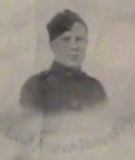
Robert Edward Phillips, Corporal, 40415, Royal Welsh Fusiliers. Robert was the son of John and Elizabeth Phillips, of 6, Bowydd View, Trawsfynydd. He was a shop assistant for Marshall and Snelgrove (now Debenhams), at 16 Marylebone Lane, Oxford Street, London prior to the war. Robert enlisted in London into the Royal Welsh Fusiliers, and was posted to the 3rd Battalion, Royal Welsh Fusiliers at Litherland. In November 1917 the battalion was sent to Limerick, as part of a large British military presence, to attempt to quell the mutinous feelings which had erupted in Ireland. On 24 June 1919 Robert was in his barracks in Limerick, sitting near a comrade who was cleaning his revolver. Unbeknown to its owner, the revolver has a round in one of its chambers, which went off, striking Robert through the shoulder and exiting through his neck. He was taken to the infirmary where he died 20 minutes later, aged 27. His remains were brought home for burial in Penycefn Cemetery, Trawsfynydd, together with his brother Azariah, who had been killed in Salisbury in a flying accident the previous year.
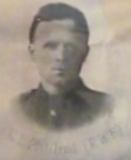
David Roberts, Private, 94087, Royal Welsh Fusiliers. David was the son of William and Ann Roberts, of 1, Pant-Y-Celyn, Trawsfynydd. He worked as a farm labourer before moving to the Rhondda Valley to work as a coalminer at Treorchy prior to the war. David enlisted at Pentre, Rhondda into the Monmouthshire Regiment. After completing his training, he was posted to France at some time in 1918, joining the 17th Battalion, Royal Welsh Fusiliers, which was attached to 115 Brigade, 38th (Welsh) Division. He most probably joined the battalion after it had launched its offensive across the flooded Ancre Valley on 21 August 1918. The Division captured Thiepval Ridge and Pozieres before beginning its advance east towards the mighty Hindenburg Line, taking Mametz Wood and Delville Wood before capturing Morval and Sailly-Saillisel over the coming days. The Division then captured Sorel-le-Grand and Aubencheul before taking part in the Battle of Épehy, and the Battle of the Selle. By 26 October the 17th RWF had taken over positions at Englefontaine, and prepared to carry on the offensive into the Forest of Mormal. Over the coming days the battalion was hit by heavy shelling, including gas shells, and a large number of casualties were suffered. David was killed in action just before the battalion was relieved from the line on 29 October 1918, aged 26. He is buried in Romeries Communal Cemetery Extension, France.
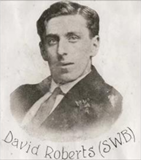
Evan Thomas, Private, 54764, Royal Welsh Fusiliers. Evan was born in Trawsfynydd in 1897, the son of Robert and Gwen Thomas. The family was residing at Tyn-y-Fedwen, Ffestiniog by 1911. Evan enlisted at Blaenau Ffestiniog into the Royal Welsh Fusiliers, and after completing his training, was posted to France, joining the 15th Battalion, Royal Welsh Fusiliers. The battalion had been raised in London, joining 113 Brigade, 38th (Welsh) Division, and had been in France since December 1915, taking part in the assault on Mametz Wood the following year. Evan would have joined the 15th RWF after its withdrawal from the Somme sector to the Canal Bank Sector at Boesinghe, north of Ypres, in August 1916. The infantry battalions of the 38th Division then began the normal routine of trench rotation, taking turns in the front line, support, then reserve, all the while carrying out improvements to the trenches, carrying out trench raids, and beating off German raids. On 17 June 1917 the 15th RWF was holding the Canal Bank line when it came under heavy fire by the German artillery, which caused 30 men killed and 60 wounded. Evan was among the men killed that day. The 20-year-old is buried in what amounts to a mass grave, in Bard Cottage Cemetery, Belgium.
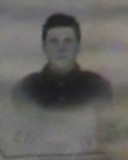
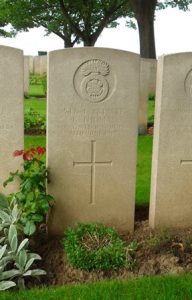
David Griffith Williams, Private, 40433, Royal Welsh Fusiliers. David was the son of Griffith and Elizabeth Williams, of Mona House, Trawsfynydd. He lived at Birkenhead with his brother Griffith prior to the war. David enlisted at Birkenhead into the Royal Welsh Fusiliers, and after completing his training was posted to France, joining the 17th Battalion, Royal Welsh Fusiliers, which was attached to 115 Brigade, 38th (Welsh) Division. The battalion had been in France since December 1915, taking part in the assault on Mametz Wood the following year. David would have joined the battalion after its withdrawal from the Somme sector in August 1916, when the Division took over the Canal Bank sector at Boesinghe, north of Ypres. The infantry battalions of the 38th Division then began the normal routine of trench rotation, taking turns in the front line, support, then reserve, all the while carrying out improvements to the trenches, carrying out trench raids, and beating off German raids. On 1 September the 17th RWF moved into the front line to begin a routine tour. David was killed in action in the front line on 3 September 1916, aged 30. He has no known grave and is commemorated on the Ypres (Menin Gate) Memorial, Belgium.
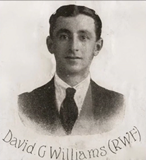
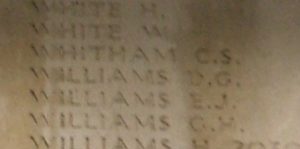
Evan Williams, Private, 291133, Royal Welsh Fusiliers. Evan was the son of Evan and Sarah Williams, of 7, Stone Street, Trawsfynydd. He was working at Ffridd Farm, near Bontddu by 1911 and prior to the war was living at Bwlch Coch, Bontddu. Evan enlisted at Blaenau Ffestiniog into the 7th Battalion, Royal Welsh Fusiliers on 15 August 1915 and was posted to the 3/7th Battalion, Royal Welsh Fusiliers at Park Hall, Oswestry. On 3 July 1916 he was posted out to Egypt, joining the 1/7th Battalion, Royal Welsh Fusiliers, which was attached to 158 Brigade, 53rd (Welsh) Division. The Division had seen service at Gallipoli the previous year and upon being evacuated to Egypt in December 1915 joined the EEF, on the Suez Canal defences. During 1916 the Division took part in operations to drive the Turks out of the Sinai. The EEF then turned its attention onto driving the Turks out of Palestine, and on 26 March 1917 launched its first offensive against the coastal city of Gaza, which guarded the road to Jerusalem. Initial gains during the day were lost when the assaulting divisions lost touch with each other and communication broke down when a thick fog cloaked the battlefield. A second offensive against Gaza was launched on 17 April, but again failed, so command of the EEF was given to Sir Edmund Allenby who reorganised his forces before launching an assault against a broader front, from Gaza to Beersheba, on 6 November 1917, an offensive which is known as the Third Battle of Gaza. Evan was killed in action during the opening day of the battle, on 6 November 1917, aged 24. He has no known grave and is commemorated on the Jerusalem Memorial, Israel.
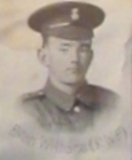
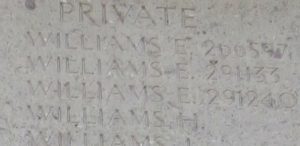
John Williams, Private, 7802, Welsh Regiment. John was the son of Hugh and Elizabeth Williams, of 3, Tyllwyd Terrace, Trawsfynydd. He worked as a coalminer at Senghenydd prior to the war and married Florence May Muller, of 9, Woodland Terrace, Senghenydd, on 29 June 1913. John must have enlisted into the Welsh Regiment prior to the war, as he landed in France with the 2nd Battalion, Welsh Regiment on 13 August 1914. The battalion was attached to 3 Brigade, 1st Division, which was one of the first Divisions to arrive in France with the BEF, moving to the Belgian frontier. The Division took part in the Battle of Mons, and in the subsequent retreat to the Marne, where the German drive on Paris was stopped. The Division then fought at the Battle of the Aisne, and at Chivy Ridge, before being moved north to Ypres, to defend the City from German attack. The 2nd Welsh had already suffered heavy casualties, but was almost decimated during the First Battle of Ypres, where the 1st Division helped stop the Germans at Gheluvelt. The Division wintered in the line near Givenchy, and on 9 May 1915 took part in the Battle of Aubers Ridge, an offensive which cost the British 11,000 casualties for no gain. On 25 May 1915 the 2nd Welsh moved into the line at Cuinchy, a notoriously dangerous sector, to begin a tour of four days in the line. John was killed in action on that first day at Cuinchy, 25 May 1915, aged 30. He has no known grave and is commemorated on the Le Touret Memorial, Richebourg-L’avoue, France. He is also commemorated on the war memorials at Senghenydd and at Pontypridd.
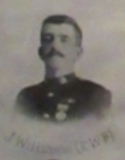
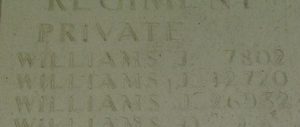
Richard Williams, Sapper, 310337, Royal Engineers. Richard was born in Llandecwyn in 1885, the illegitimate son of Gaynor Williams, a farm servant. By 1901 his mother had married William Williams, and the family was living in 3, Fronwnion Street, Trawsfynydd. Richard worked as a Carpenter prior to the war, and lived at Brynawen, Trawsfynydd. He enlisted at Blaenau Ffestiniog into the 17th Battalion, Royal Welsh Fusiliers on 4 February 1915, and joined the battalion at Llandudno. The battalion was attached to 128 Brigade, 43rd (Welsh) Division, but on 29 April 1915 the formation became renumbered as 113 Brigade, 38th (Welsh) Division. In July the battalion moved with the 38th Division to Morn Hill Camp, Winchester, where it transferred to 115 Brigade. A month later, Richard was posted to the 20th Battalion, Royal Welsh Fusiliers, at Kinmel Park, which was a reserve battalion to the RWF battalions in the 38th Division. On 19 April 1916 Richard embarked at Folkestone for France, and joined the 38th Infantry Base Depot at Étaples. From here he was posted to the 15th Battalion, Royal Welsh Fusiliers on 15 September 1916, joining the battalion after it had been withdrawn from the Somme to the Canal Bank Sector at Ypres. On 16 March 1917 Richard was transferred to the 29th Light Railway Operating Company, Royal Engineers. Richard was at work near Ypres when he was hit by German machine-gun fire, suffering gunshot wounds to his chest, right knee and hands, and was taken to the 4th Casualty Clearing Station, Belgium. He died of his wounds there on 21 March 1918, aged 32. He is buried in Dozinghem Military Cemetery, Belgium.
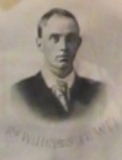
World War Two, 1939-1945
John Ellis, Private, 3779321, The King’s Regiment (Liverpool). John was the son of Thomas and Jane Ellis, of Trawsfynydd. He enlisted into the Army and was posted to the 13th Battalion, The King’s Regiment (Liverpool). The Battalion was raised in October 1940 for coastal defence in England and assigned to the 208th Independent Infantry Brigade. The battalion sailed for India in December 1941, originally to carry out internal security and garrison duties. Following the Japanese occupation of Burma, the battalion was used to form the basis of Orde Wingate’s famous Chindits. The Chindits first operation began on 8 February 1943, when the Chindits crossed the Chindwin River into Burma. John died in Burma on 5 October 1943, aged 32. He is buried in Rangoon War Cemetery, Myanmar.
Richard Griffiths, Private, 4207134, Royal Army Ordnance Corps. Richard was born on 17 April 1910, the son of Evan and Gwen Griffiths, of Jerusalem, Trawsfynydd. He married Kate Ann Edwards, of Ganllwyd, in 1939. Richard enlisted into the Royal Army Ordnance Corps, and was posted out to the Middle East, to Iraq. Nothing further is known of his military service, but Richard died in Iraq on 12 June 1942, aged 32. He is buried in Basra War Cemetery, Iraq.
Arthur Jones, Gunner, 960948, Royal Artillery. Arthur was the son of Evan Ffoulkes Jones and Jane Jones (nee Thomas), of Trawsfynydd. He enlisted into the Royal Artillery and was posted to the 77th Field Regiment, Royal Artillery. The Regiment was a Scottish one, raised in Renfrewshire, and served on home defence duties before embarking for North Africa. Arthur served with the regiment throughout the North African campaign, which saw the defeat of Rommel’s Afrika Korps, and then took part in the invasion of Italy from 3 September 1943. Arthur died in Italy on 13 May 1944, aged 25. He is buried in Cassino War Cemetery, Italy.
Evan Thomas Roberts, Private, 4202198, Gloucestershire Regiment. Evan was the son of Mr. and Mrs. John Roberts, of Trawsfynydd. He enlisted into the army and was posted to the 1st Battalion, Gloucestershire Regiment. The Battalion was stationed near Rangoon, in Burma, at the outbreak of war. Following the Japanese invasion of Burma, the battalion provided the rear-guard for the British retreat from Rangoon and saw its first significant action of the war on 7 March 1942, at the Taukkyan Roadblock. The battalion then continued to follow the British withdrawal, and saw further fighting during desperate battles at Letpadan on 17 March and Paungde on 27 March. Evan was killed during another battle of Padigong on 30 March 1942. The 21-year-old has no known grave and is commemorated on the Rangoon Memorial, Myanmar.